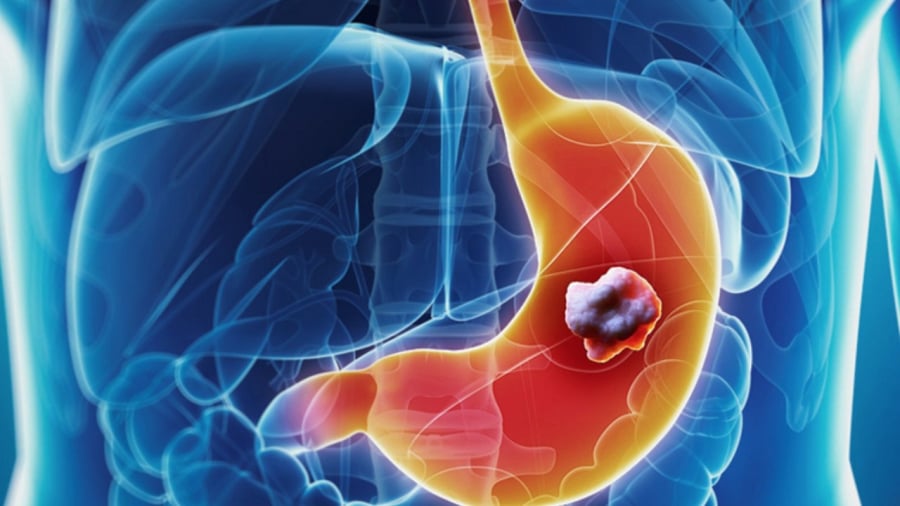

 Tuberculosis Surpasses COVID-19 as the World’s Deadliest Infectious Disease — What You Need to Know
Tuberculosis Surpasses COVID-19 as the World’s Deadliest Infectious Disease — What You Need to Know
It wasn’t long ago that COVID-19 dominated global headlines and reshaped life as we knew it. But according to a recent World Health Organization (WHO) report, another familiar threat has quietly reclaimed its place as the world’s most lethal infectious disease: tuberculosis (TB).
After briefly taking a backseat during the COVID-19 pandemic, TB has surged back to the top, surpassing COVID-19 in annual global deaths — a sobering reminder that even in a post-pandemic world, the threat of infectious disease is far from over.
So, what exactly does this shift mean for public health — and for you and your family?
 What Is Tuberculosis (TB)?
What Is Tuberculosis (TB)?
Tuberculosis is a serious bacterial infection caused by Mycobacterium tuberculosis.
It typically affects the lungs, but can also spread to the kidneys, spine, brain, and other organs. TB is highly contagious and spreads through the air when an infected person coughs, sneezes, or speaks — meaning the risk of transmission is often higher in crowded or poorly ventilated spaces.
Although treatable in around 85% of cases, TB remains deadly when left undiagnosed or untreated.
The bacteria can remain dormant for years before triggering active disease — making it a persistent and sometimes silent killer.
 Shocking Global Statistics
Shocking Global Statistics
The latest WHO data paints a stark picture:
-
In 2023, 1.25 million people died from TB — nearly four times the number of global COVID-19 deaths in the same year (320,000).
-
10.8 million people became ill with TB, marking an upward trend from previous years.
-
Alarmingly, TB-HIV co-infections have risen by 40% since 2013, posing a deadly challenge as HIV weakens the immune system, making TB harder to fight.
These statistics highlight that TB remains a global emergency, especially in regions with fragile healthcare systems.
 Who Is Most at Risk?
Who Is Most at Risk?
TB disproportionately affects populations in low- and middle-income countries, with 87% of cases concentrated in just 30 nations.
Top contributors include:
-
India
-
Indonesia
-
China
-
The Philippines
-
Pakistan
These five nations alone account for over half of all TB cases globally.
Vulnerable groups such as people with HIV, malnourished individuals, and those with limited access to medical care face the greatest risk.
 Common Symptoms of TB
Common Symptoms of TB
TB symptoms depend on where the infection occurs in the body:
Pulmonary TB (lungs – the most common form):
-
Persistent cough (often with blood or mucus)
-
Chest pain
-
Fever
-
Night sweats
-
Weight loss
Extrapulmonary TB (outside the lungs):
-
Spinal TB: back pain, paralysis
-
Kidney TB: blood in urine, kidney dysfunction
-
Lymph node TB: swelling and tenderness
-
Brain or spine TB: headaches, seizures, neurological symptoms
 Can TB Be Prevented?
Can TB Be Prevented?
Yes — and the WHO is pushing hard for global eradication by 2030.
TB is both preventable and treatable, and international health agencies are investing in:
-
Screening high-risk individuals
-
Expanding treatment programs
-
Accelerating vaccine research — with six new TB vaccines currently in Phase III clinical trials
While global TB deaths have declined in recent decades, the pandemic disrupted progress in 2020 and 2021. Now, with renewed urgency, public health leaders are aiming to get back on track.
If you live in or travel to a country with high TB rates — or have close contact with someone infected — it’s critical to get tested and seek early treatment if needed.
 Preparing for Future Pandemics: What WHO Is Doing
Preparing for Future Pandemics: What WHO Is Doing
The resurgence of TB, alongside other emerging threats, reinforces the urgent need for global pandemic preparedness.
The World Health Organization is leading several initiatives to strengthen global health resilience, including:
-
The Eliminate Yellow Fever Epidemics (EYE) Strategy
-
Ending Cholera: A Global Roadmap to 2030
-
Pandemic Influenza Preparedness (PIP) Framework
-
Global Influenza Strategy 2018–2030
Additionally, WHO manages the International Coordinating Group on Vaccine Provision, which oversees global emergency stockpiles of vaccines and antibiotics to ensure rapid response during disease outbreaks.
 The Power of Collective Action
The Power of Collective Action
If there’s one lesson the world has learned from COVID-19, it’s this: no nation can fight a pandemic alone.
Collaboration among governments, researchers, healthcare workers, and international organizations is critical to preventing, detecting, and responding to infectious disease threats.
Global health security depends on:
-
Robust healthcare systems
-
Timely diagnostics
-
Effective vaccines
-
Cross-border cooperation
The fight against TB — and future pandemics — requires sustained investment, research innovation, and community-level education.
 The Bottom Line
The Bottom Line
TB’s return as the world’s deadliest infectious disease is a sobering wake-up call.
While COVID-19 changed our world overnight, TB has been quietly killing millions for generations — and continues to do so.
It’s time for governments, health agencies, and individuals to reignite the fight:
-
Get tested if you’re at risk
-
Support vaccination and awareness efforts
-
Advocate for global funding and research
Because when it comes to infectious diseases, prevention saves lives — and preparedness ensures we’re ready for whatever comes next.
7 Early Warning Signs of Stomach Cancer You Should Never Ignore

Stomach cancer is becoming increasingly common, especially in Asia. Unfortunately, its early symptoms are often mistaken for ordinary digestive issues. Many patients dismiss the signs, believing it’s just gastritis or indigestion—until the pain becomes unbearable, and by then, the disease may have reached an advanced stage or even spread.
So how can you detect stomach cancer early? Here are 7 crucial warning signs that everyone should be aware of:
1. Persistent Abdominal Pain and Bloating
One of the first signs of stomach cancer is vague, persistent abdominal discomfort. About 70% of early-stage patients report feeling bloated, full, or slightly painful after meals or when lying down. This symptom is easy to overlook but should not be ignored if it occurs frequently.
2. Frequent Heartburn or Acid Reflux
If you regularly experience heartburn, acid reflux, or a burning sensation after eating, it may be more than just acid reflux disease. These symptoms can also signal early-stage damage to the stomach lining, which can progress into cancer over time.
3. Loss of Appetite and Disinterest in Food
Chronic stomach inflammation or the presence of abnormal cells can lead to reduced appetite. People may feel full quickly or lose interest in food altogether. If this continues for weeks without a clear reason, it could be a red flag for something more serious.
4. Unusual Changes in Stool Appearance
One subtle but important sign is a change in your stool. In some cases, internal bleeding from the stomach can cause black, tarry, or blood-tinged stools. If you notice these changes, especially accompanied by other symptoms, consult a doctor immediately.
5. Sudden, Unexplained Weight Loss
Unexplained weight loss is a hallmark symptom of many types of cancer, including stomach cancer. The disease can suppress appetite and interfere with nutrient absorption, leading to rapid, unintended weight loss.
6. Constant Fatigue or Weakness
Cancer cells can weaken your body over time. People with early-stage stomach cancer often feel tired, sluggish, and drained, even without exertion. If this kind of fatigue persists, it’s time to get checked.
7. Nausea and Vomiting Blood
Experiencing nausea and especially vomiting blood is a serious warning sign. If this occurs—even just once—seek immediate medical attention. It could be due to bleeding tumors or severe damage to the stomach lining.
 Conclusion
Conclusion
Your body speaks—listen closely. Stomach cancer is treatable, even curable, when detected early. If you experience two or more of these symptoms for more than two weeks, don’t wait. Visit a trusted healthcare provider and ask about screening or endoscopy.

Woman Diagnosed with 7-Year Sinus Infection After Unusual Exposure to E. coli

A woman named Christine Connell recently shared an unforgettable experience on TikTok: she suffered from a seven-year-long sinus infection after an unexpected incident—her ex-boyfriend accidentally passed gas near her face while she was recovering from ankle surgery.
In the video (which has since been made private), Connell explained that doctors were initially puzzled by her persistent sinus infection. After running multiple tests and eventually taking culture samples from her nose, they discovered that the culprit was E. coli—a bacteria typically found in fecal matter.
“E. coli comes from feces,” Connell said. “How else would it end up in my sinuses unless you have a boyfriend who farts right near your face when you’re unable to move?”
In a follow-up video, she provided more context: she and her ex were staying in a hotel room with two beds. While he was getting into bed, she happened to be lying down with her face exposed in the direct path of the incident. Connell clarified that it wasn’t intentional—just an unfortunate coincidence.
According to the Cleveland Clinic, E. coli is transmitted through fecal-oral contamination. Even trace amounts invisible to the naked eye can cause illness when they enter the mouth or digestive tract. In Connell’s rare case, the bacteria affected her respiratory system, likely due to her weakened immune system from recent surgery.
“I think my immune system was focused on healing my ankle,” she said. “If I had been completely healthy, maybe it wouldn’t have happened.”
Unfortunately, multiple rounds of antibiotics failed to eliminate the infection. In a third video, Connell revealed that she now needs surgery to fully treat the condition.
“They’re going to use general anesthesia and go in to physically scrape out the infected tissue and flush the area clean,” she explained.
Parsley Leaf Tea
Parsley tea offers a wide range of health benefits. It acts as a natural diuretic, supports the immune system, improves digestion, helps regulate blood pressure, and lowers cholesterol levels. It has also been linked to liver protection, prevention of kidney stones, and relief from muscle spasms.
Specific Benefits of Parsley Tea:
Diuretic:
Helps eliminate excess fluids from the body, which can reduce bloating and water retention.
Immune System:
Parsley is a natural source of vitamin C, essential for strengthening the immune system.
Digestion:
Promotes healthy digestion, reduces stomach acidity, and may relieve gastrointestinal discomfort.
Cardiovascular Health:
May help regulate blood pressure, lower bad cholesterol levels, and improve circulation.
Liver and Kidneys:
Supports liver detoxification, aids in toxin removal, helps prevent kidney stones, and reduces stress on the kidneys.
Antioxidant Effects:
Rich in antioxidants that fight free radicals and help reduce oxidative stress in the body.
Other Benefits:
Parsley tea may help control blood sugar levels, ease muscle spasms, and support respiratory health.
How to Prepare:
-
In a cup of boiling water, add one sprig of fresh or dried parsley.
-
Let it steep for 10 minutes.
-
Strain before drinking.
-
You may sweeten it with honey or stevia if desired.